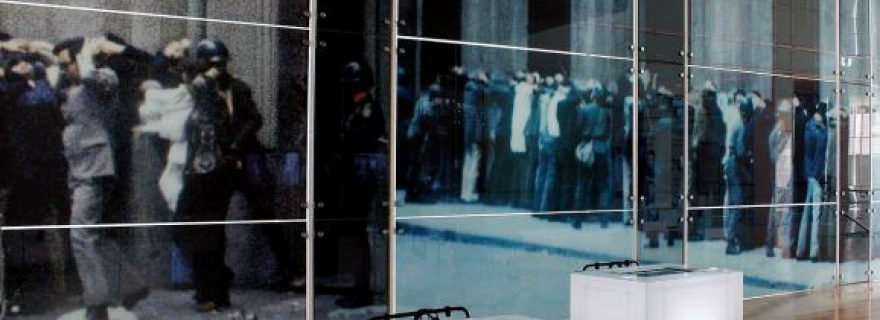Forbidden images: unlocking political and emotional blockages of Chilean history
The dictatorship in Chile (1973- 1989) built its history by systematically erasing imaginaries different from its own. Forty years after the coup many forbidden images were made public, inaugurating a new chapter in Chile’s history - one not yet official.
This September 11, 2013 was a date of commemoration, emotions, and reflection in Chile. Few talked about the Twin Towers attack of 2001, but many talked about the US intervention in what turned out to be one of the most bloody and terrifying dictatorships in Latin America. September 11 marked 40 years since the day the course of the nation’s history changed dramatically, but also marked a point in which yet another history was erased in order to be rewritten. The painful human side of that history is that along with the new national project founded with the coup in 1973, many people were killed and disappeared, while others were systematically tortured and persecuted for political reasons.
Augusto Pinochet’s State terrorism wanted to show publicly the harsh punishments in store for those daring to keep alive a socialist imaginary as a national political project. Following that same line, most of the images representing such a project were cleared. As Luis Hernán Errázuriz shows in detail, books and magazines were burned, pictures censored, and political murals on the streets erased. Even with the return of democracy in 1990, and until not so long ago, history curricula in schools officially stopped before even mentioning the dictatorship. Actually, until today, in school curricula the dictatorship is referred to as “military government.” In Chile, the word dictatorship is not yet official.
However, Chilean society has slowly begun to face disclosing the facts about the terror of the dictatorial days. For instance, the Museum of Memory in Santiago only opened in 2010 and just recently exhibited banned images and media montages putting a spin on events from the time of the dictatorship. Furthermore, the museum (which is not a public institution but a private foundation) actually has an immense archive of photos, personal letters, and testimonies from that time, which now became available for everyone to see.
Still, visitor numbers are far from encompassing a broader national audience. I was there in 2010 with my parents. After looking at the exhibits of the first floor in detail, they found it emotionally hard to go as thoroughly over the entire museum and waited for me outside while I took my time to finish. I came back three more times. For me the exhibit represented a huge source of information, with its images filling the gap of those silences experienced during my childhood. My guess is that for the generation born after the dictatorship the exhibition will represent a way to learn about the histories of those who preceded them, and who bodily experienced the terrible years of being officially, politically incorrect in the eyes of the regime.
After 40 years, and despite the political and emotional blockages, this last September 11 of 2013 many forbidden images made it out from their previous security vaults and were shown on TV. A program called Imágenes Prohibidas (forbidden images) revisited untold histories through an audiovisual archive collection in four series of documentaries.
The program was produced to memorialize the 40 years since the coup, and was introduced by its conductor as having the intention of showing what had been invisible to many until today. The aim was to make an impact on viewers. It actually did. More than 160 formal complaints reached the regulatory organ for TV (Consejo Nacional de Television, CNTV) trying to stop the screening; not only because it showed histories which for many are still not yet official, but also because it made public personal experiences and testimonies of tortures that many refuse to recognize actually happened.
Briefly, each documentary edited archival footage in such a way that motion images were frozen, and a new picture was made by zooming in on a person standing in the background of the broader picture. Then, in the following shot, the background person would appear facing the camera, telling the story captured by the image 40 years earlier, standing in the same spot as the archive footage had previously shown them in. Background people appeared in the foreground, while past images elicited their stories of today. Moreover, through their presence on camera these people giving their testimonies showed that histories from the dictatorship are still alive and deeply felt. Even when not yet official, the program made background stories visible and showed how deeply human and emotional the making of history can get for those who are part of it. (see minutes 12:41-14:10)
In Chile there are still people who refuse to see these forbidden images. They still provoke revulsion for many reasons and in many different ways, politically and emotionally. Many want to forget and move on, others just cannot. All in all, history is not dead but alive, and all those untold fragments are not mere silences but histories of those whose testimonies were one day made invisible. History, official or not, is far from lacking pain and conflict, as Norbert Lechner states. Despite censorship and grand narratives, culture and politics is something we all do. Paraphrasing Salvador Allende, "History is ours and it’s done by its people." And, according to Steve J. Stern, memory too.



0 Comments
Add a comment